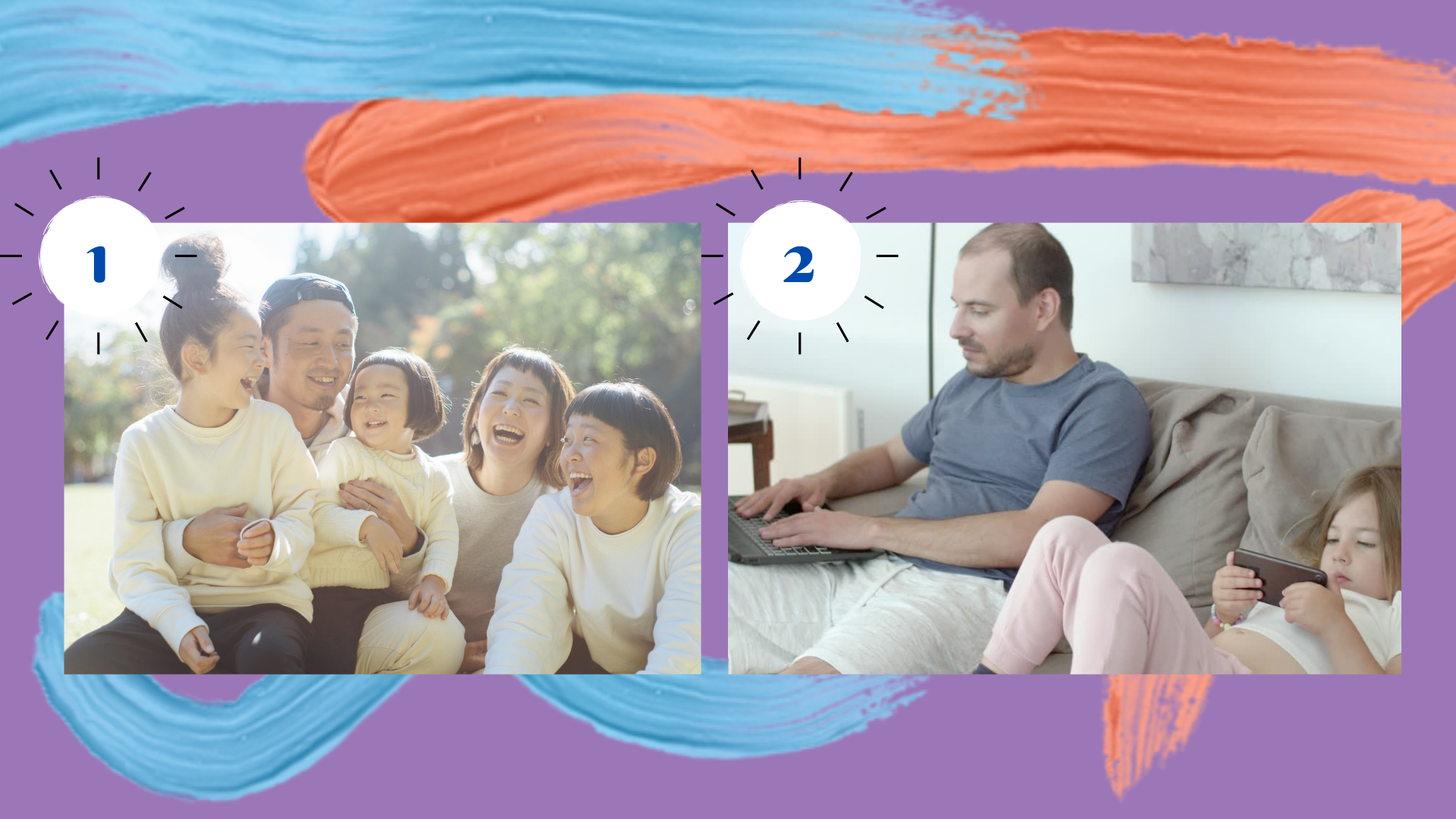
Hãy nhập câu hỏi của bạn vào đây, nếu là tài khoản VIP, bạn sẽ được ưu tiên trả lời.


Speaking Strategy (Chiến thuật Nói)
When you do a photo comparison task, follow these steps: (Khi thực hiện bài so sánh tranh ảnh, làm theo các bức sau:
1. Describe each photo in general (e.g. mention the people, where they are, speculate about what is happening, etc.) (Mô tả tổng quát mỗi bức tranh )e.g. nhắc đến người, họ là ai, xem xét những thứ đang xảy ra, v.v.)
2. Describe any obvious differences or similarities between the photos. (Mô tả những điểm giống nhau hoặc khác nhau rõ ràng giữa các bức ảnh.)
3. Speculate about how the people in the photos are feeling, or what they are thinking or saying. (Xem xét cảm xúc của những người trong ảnh,hoặc những gì có thể nghĩ hay nói.)

1. Which sentence uses the simple present? Sentence b
(Câu nào sử dụng thì hiện tại đơn? Câu b)
Giải thích:
Câu b có trạng từ chỉ tần suất “usually”, chủ ngữ và động từ của câu theo cấu trúc thì hiện tại đơn: S + V_(s/es)
2. Which sentence uses the present continuous? Sentence a
(Câu nào sử dụng thì hiện tại tiếp diễn? Câu a)
Giải thích:
Câu a có chủ ngữ và động từ của câu theo cấu trúc thì hiện tại tiếp diễn: S + am/ is/ are + V_ing
3. Which sentence is about an action happening now (or around the time of speaking)? Sentence a
(Câu nào là về một hành động đang xảy ra bây giờ (hoặc xung quanh thời điểm nói)? Câu a)
Giải thích:
Câu a sử dụng thì hiện tại tiếp diễn, dể diễn tả 1 hành động đang xảy ra bây giờ
4. Which sentence is about a habit or routine? Sentence b
(Câu nào là về một thói quen hoặc việc hàng ngày? Câu b)
Giải thích:
Câu b sử dụng thì hiện tại đơn, dể diễn tả 1 thói quen (thường làm gì vào thứ sáu hàng tuần)

1. Let's get together next Saturday.
How about ...................getting together next Saturday................................
He suggest ......................getting together next Saturday..............................
2. Why don't we go to the beach tomorrow ?
They suggest .................going to the beach tomorrow.................................
3. They will hold the meeting before the May Day .
The meeting will be hold meeting before the May Day
4. They may use this room for the classroom.
This room .........may be used this room for the classroom............................
5. They use milk for making butter and cheese.
Milk ..............is used for making butter and cheese................
6. They didn't allow Tom to take these books home.
Tom ...............wasn't allowed to take these books home.......................
Mr. Smith has taught us French for two years.
=> we have been taught for two years by Mr.smith
7. You mustn't use the machine after 5.30 p.m
The machine ............mustn't be used after 5.30 p.m.......................

- Which job would you prefer? Why?
(Bạn thích công việc nào hơn? Tại sao?)
- What job do you want to have when you are older?
(Công việc mà bạn muốn làm khi lớn hơn)
- Why? (Tại sao)
+ In the picture A, a man is working outside, while in the picture B a man is working inside.
(Trong bức tranh A, người đàn ông thì làm việc ngoài trời trong khi bức tranh B thì một người đang làm việc trong nhà.)
+ The job in the picture A needs to be strong and well physical health, compared to the job in the picture B requires a very good logical thinking.
(Công việc trong bức tranh A cần khỏe và thể lực tốt, so sánh với công việc ở bức tranh B cần tư duy logic tốt.)
+ I prefer the job in the picture B because I'm not strong enough to do a physical job and I like solving problems by logical thinking.
(Tôi thích công việc trong bức tranh B vì tôi không đủ khỏe để làm việc cần thể lực và tôi thích giải quyết vấn đề bằng tư duy logic.)

- Nodding your head in Vietnam means a greeting or sign of agreement.
(Gật đầu ở Việt Nam có nghĩa là một lời chào hoặc dấu hiệu đồng ý.)
- Common Vietnamese gestures and body language:
(Các cử chỉ và ngôn ngữ cơ thể thông dụng của người Việt Nam:)
+ Nodding: a greeting, affirmative reply or sign of agreement
(Gật đầu: một lời chào, một câu trả lời khẳng định hoặc một dấu hiệu đồng ý)
+ Shaking one’s head: negative reply, a sign of disagreement
(Lắc đầu: câu trả lời phủ định, dấu hiệu không đồng ý)
+ Bowing: greeting or a sign of great respect
(Cúi đầu: lời chào hoặc một dấu hiệu kính trọng)
+ Frowning: an expression of frustration, anger or worry
(Cau mày: biểu hiện của sự thất vọng, tức giận hoặc lo lắng)
+ Avoiding eye contact: shows respect to seniors in age or status or of the opposite sex
(Tránh giao tiếp bằng mắt: thể hiện sự tôn trọng với những người có tuổi tác và địa vị cao hơn hoặc khác giới)


1.Happy><2.Unhappy
1.Fun><2.Boring
1.Free><2.Busy
1.Concord><2.Divide
1.Attachment><2.Divide
1.Out side><2.In the home
1.Relax><2.Stress
1 funny family laughing
2 father and daughter use the phone computer